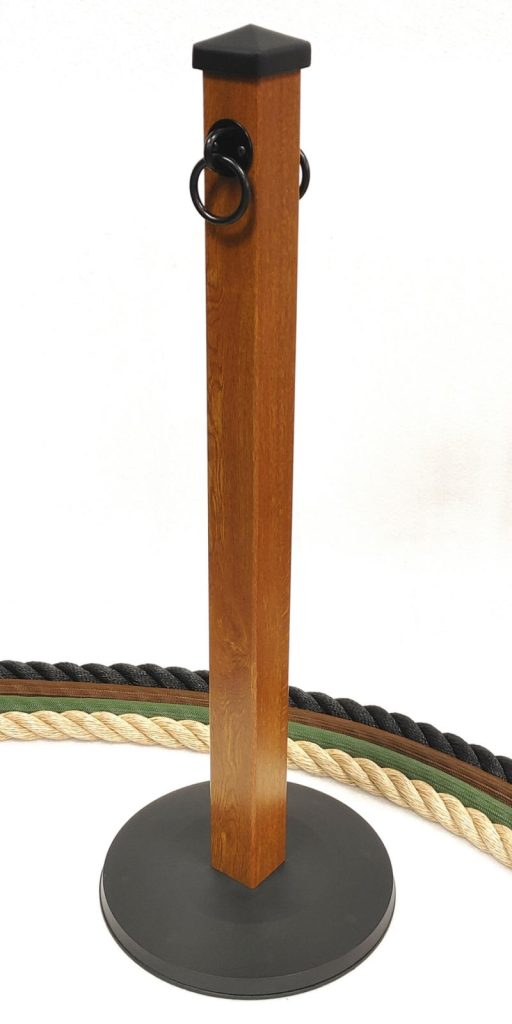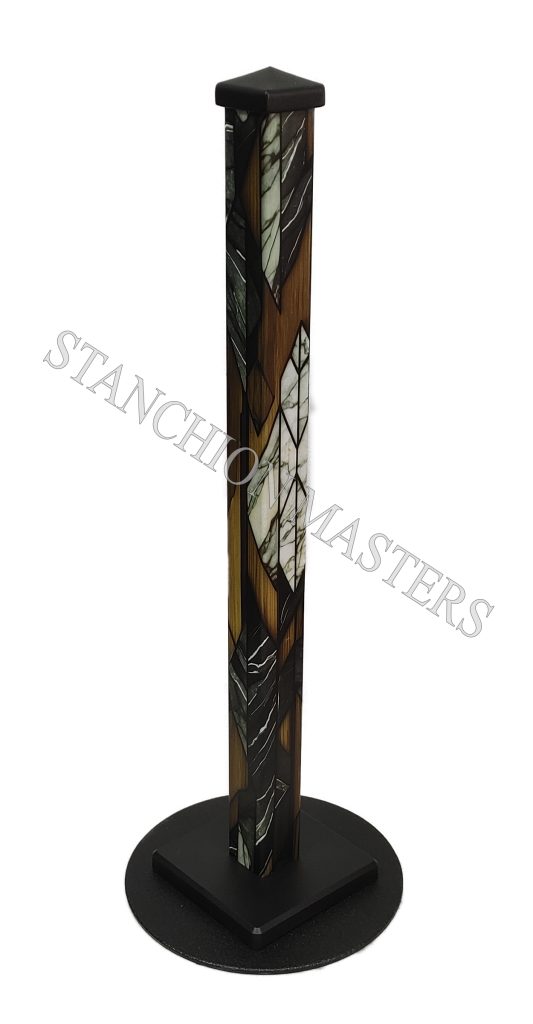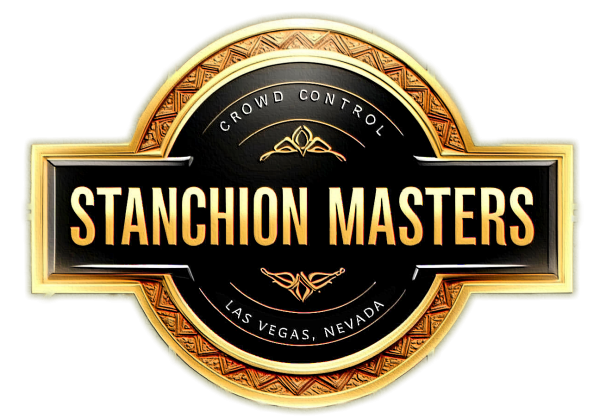 The Presidential Action Promoting Beautiful Federal Civic Architecture emphasizes the importance of designing and preserving federal buildings that reflect the dignity, heritage, and aesthetic beauty of our nation. Stanchion Masters® is proud to offer solutions that align with this directive, providing functional and elegant crowd control stanchions tailored for government properties, including historic courthouses, national museums, and state capitol buildings.
The Presidential Action Promoting Beautiful Federal Civic Architecture emphasizes the importance of designing and preserving federal buildings that reflect the dignity, heritage, and aesthetic beauty of our nation. Stanchion Masters® is proud to offer solutions that align with this directive, providing functional and elegant crowd control stanchions tailored for government properties, including historic courthouses, national museums, and state capitol buildings.
Preserve Heritage With Faux Wood, Faux Marble, and Art Deco Stanchions
Stanchion Masters® specializes in creating aesthetically harmonious crowd control stanchions that preserve and enhance the architectural heritage of government institutions. Our product lines include:
- Faux Wood Stanchions: Featuring rich walnut and oak finishes, these stanchions evoke the warmth and texture of real wood while remaining low-maintenance and durable.
- Example: In the U.S. Capitol Visitor Center, faux wood stanchions seamlessly blend with the historic wooden elements, guiding visitors while respecting the architectural integrity of the space.
- Faux Marble Stanchions: Our faux marble stanchions mimic the grandeur of authentic marble with several elegant options, including classic white marble with thin veins, antique black and white hued posts with gold veins, frosted grayish white or brick red with black sponge accents.
-
Example: In federal courthouses adorned with marble flooring and columns, our faux marble stanchions in classic white with subtle veins act as both functional crowd control tools and decorative complements, enhancing the regal atmosphere. Additionally, in settings like federal museums or historic government offices where opulence is key, our antique black and white stanchions with gold veins provide a luxurious touch, blending seamlessly with the surroundings.For instance, imagine a grand lobby of a federal museum where these stanchions, with their intricate gold veining on a black and white background, guide visitors while adding to the aesthetic appeal, making the space feel like a historical treasure itself.
-
- Art Deco Stanchions: Ideal for properties featuring 1920s and 1930s architectural motifs, these stanchions add geometric elegance to any space.
- Example: In historic post offices or Art Deco federal buildings, these stanchions elevate the visitor experience, blending effortlessly with intricate patterns and designs.
Compliance with the Presidential Action
Stanchion Masters® products align with the guidelines set forth in the Presidential Action Promoting Beautiful Federal Civic Architecture, ensuring:
- Aesthetic Harmony: Designed to “uplift and beautify public spaces,” our stanchions integrate seamlessly with traditional, classical, and regional architectural styles.
- Durability and Functionality: Crafted from high-quality materials, our stanchions offer long-lasting performance while maintaining their visual appeal.
- Customization: We collaborate with architects, designers, and property managers to create bespoke solutions that enhance each building’s unique identity.
Why Designers and Government Employees Should Choose Stanchion Masters®
- Enhanced Visitor Experience: Organize public interactions efficiently with visually pleasing crowd control solutions.
- Heritage Preservation: Maintain the historical and aesthetic integrity of federal properties with stanchions designed to complement their architecture.
- Economic and Practical Benefits: Our faux materials offer a cost-effective, low-maintenance alternative to natural materials without compromising on beauty or durability.
- Sustainability: Long-lasting designs reduce waste, aligning with environmentally responsible practices in civic architecture.
Examples of Stanchions in Federal Properties
- Historic Courthouses: Faux wood stanchions enhance the classic interiors of federal courthouses, preserving their timeless charm.
- National Museums: Faux marble stanchions protect exhibits and manage visitor flow while complementing marble flooring and columns.
- State Capitols: Art Deco stanchions enrich lobbies and public areas with their geometric elegance and period-specific designs.
- Visitor Centers: Custom vinyl-wrapped stanchions celebrate local heritage through unique, thematic designs.
How Stanchion Masters® Supports Federal Civic Architecture Projects
- Consultation: We work closely with government agencies to select stanchions that meet both functional needs and aesthetic guidelines.
- Design Integration: Collaborating with preservationists and designers, we ensure our stanchions seamlessly fit within the architectural context.
- Customization: Offering tailored solutions for every project, from color finishes to thematic designs.
While we cannot guarantee 100% compliance with government regulations, Stanchion Masters® offers highly unique stanchions that are perfectly suited to meet the aesthetic standards of federal properties. By partnering with Stanchion Masters®, federal institutions can align with the spirit of the Presidential Action Promoting Beautiful Federal Civic Architecture, creating spaces that command respect and admiration. Our commitment to quality and design excellence positions us as the go-to source for crowd control solutions in government buildings.
 Contact Us
Contact Us
Explore our full range of crowd control stanchions and discover how we can help beautify and functionalize your federal property. Let’s work together to uphold the principles of beautiful federal civic architecture.
-
Style: Stanchions must align with the architectural style of the building, which under the new directive, favors traditional, classical, and regional styles. This might mean:
-
Classical: Columns or posts with fluted designs, ionic or doric capitals for a more historical look.
-
Art Deco: Streamlined shapes, geometric patterns, and stylized motifs for buildings from the early 20th century.
-
Faux Materials: Use of faux wood or marble to mimic the building’s natural materials without the maintenance.
-
-
Colors: Should match or complement the building’s palette:
-
Faux Wood: Shades of brown, walnut, or mahogany to blend with wooden elements.
-
Faux Marble: White, black, or veined patterns to match existing marble features.
-
Art Deco: Often seen in black, gold, silver, or bronze to reflect the era’s color schemes.
-
-
Weight: Must be heavy enough to remain stable but manageable for staff to move or set up. Typically, bases should be made of materials like cast iron, stainless steel, or high-density plastic, with weights varying but generally around 15-30 pounds for stability.
-
Materials: Must be durable, corrosion-resistant, especially for outdoor use:
-
Indoor: High-quality powder-coated metals, durable plastics, or composites.
-
Outdoor: Weather-resistant materials, possibly with UV protection and anti-corrosive treatments.
-
-
Barrier Type:
-
Ropes: Should be made from materials like velvet, velour, or braided nylon for indoor use; must be color-coordinated with the stanchion and the building’s decor. Ropes should be between 4 to 7 feet in length to create effective but not overly obstructive barriers.
-
Belts: Retractable belts should be strong, with options for custom printing or branding. Colors should be subdued or match the building’s aesthetic, with standard colors like black, burgundy, or blue often preferred.
-
-
Height: Typically, stanchions are around 3 to 4 feet tall to ensure they are visible but do not block sightlines.
-
Accessibility: Must comply with the Americans with Disabilities Act (ADA), where applicable, ensuring no tripping hazards and that they do not impede access for those with disabilities. This might mean:
-
Spacing: Adequate space between stanchions to allow for wheelchair navigation.
-
Design: Lower belts (retractable stanchions only) or additional features for visually impaired individuals to detect barriers.
-
-
Low Maintenance: Materials should be easy to clean and maintain, especially in high-use areas.
-
Sustainability: Preference for materials or production processes that minimize environmental impact, like recycled content or energy-efficient manufacturing.
-
Customizable: Options for engraving, custom colors, or logos to match federal branding or specific building identity.
-
Integration with Existing Systems: Must work with or be adaptable to existing crowd control or security systems within the building.
